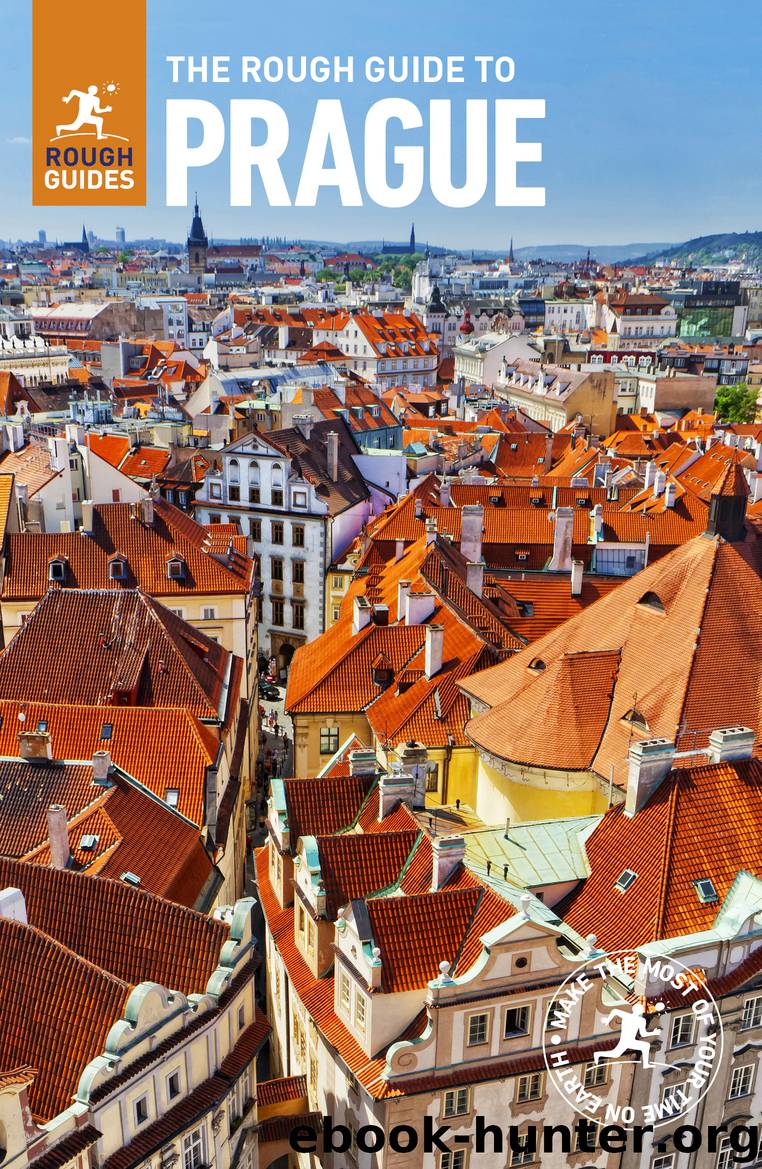The Rough Guide to Prague by Rough Guides

Author:Rough Guides
Language: eng
Format: epub
Tags: Travel, Czech Republic
Publisher: Apa Publications
Published: 2018-05-21T09:06:20+00:00
Third floor: nineteenth- and twentieth-century French art
On the third floor is the ever-popular French art collection, which features anyone of note who hovered around Paris in the fifty years from 1880 onwards. The collection kicks off with several works by Auguste Rodin, particularly appropriate given the ecstatic reception that greeted the Prague exhibition of his work in 1902. Rodin’s sculptures are surrounded by works from the advance guard of Impressionism: Courbet, Delacroix, Corot, Sisley and early Monet and Pissarro. There’s the characteristically sunny Provençal Green Wheat by Vincent van Gogh, and Moulin Rouge by Toulouse Lautrec with Oscar Wilde looking on. Nearby, the loose brushwork and cool turquoise and emerald hues of Auguste Renoir’s Lovers are typical of the period of so-called High Impressionism. Bonjour Monsieur Gauguin is a tongue-in-cheek tribute to Courbet’s painting of a similar name, with Paul Gauguin donning a suitably Bohemian beret and overcoat. Also on display is the only known self-portrait by Henri Rousseau, at once both confident and comical, the artist depicting himself, palette in hand, against a boat decked with bunting and the recently erected Eiffel Tower.
There’s also a surprisingly good collection of works by Pablo Picasso, including several paintings and sculptures from his transitional period (1907–08), and lots of examples from the height of his Cubist period in the 1910s; his Landscape with Bridge from 1909 uses precisely the kind of prisms and geometric blocks of shading that influenced the Czech Cubist architects. In addition, there are a couple of late paintings by Paul Cézanne, a classic pointilliste canvas by Georges Seurat and Cubist works by Braque. Joaquine, painted by Henri Matisse in 1910–11, is a first-rate portrait, in which both Fauvist and Oriental influences are evident. Look out too for Marc Chagall’s The Circus, a typically mad work from 1927, and a rare painting by Le Corbusier himself, which clearly shows the influence of Fernand Léger, one of whose works hangs close by.
Download
This site does not store any files on its server. We only index and link to content provided by other sites. Please contact the content providers to delete copyright contents if any and email us, we'll remove relevant links or contents immediately.
Spell It Out by David Crystal(35846)
Underground: A Human History of the Worlds Beneath Our Feet by Will Hunt(11836)
A Year in the Merde by Stephen Clarke(5077)
Venice by Jan Morris(2429)
Claridge's: The Cookbook by Nail Martyn & Erickson Meredith(2257)
My Paris Kitchen: Recipes and Stories by Lebovitz David(2133)
A TIME OF GIFTS by Patrick Leigh Fermor(2101)
The Plantagenets by Dan Jones(1928)
Welcome to the Goddamn Ice Cube by Blair Braverman(1884)
Bang Poland: How To Make Love With Polish Girls In Poland by Roosh V(1856)
Top 10 Prague (EYEWITNESS TOP 10 TRAVEL GUIDES) by DK(1851)
The Finnish Way by Katja Pantzar(1806)
The Isle of Mull by Terry Marsh(1803)
From Russia with Lunch by David Smiedt(1793)
A TIME TO KEEP SILENCE by Patrick Leigh Fermor(1770)
Rick Steves London 2018 by Rick Steves & Gene Openshaw(1749)
A Taste of Paris by David Downie(1744)
Merde in Europe by Stephen Clarke(1671)
Insight Guides Experience Tokyo by Insight Guides(1658)
